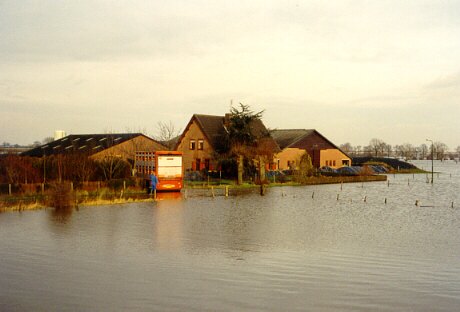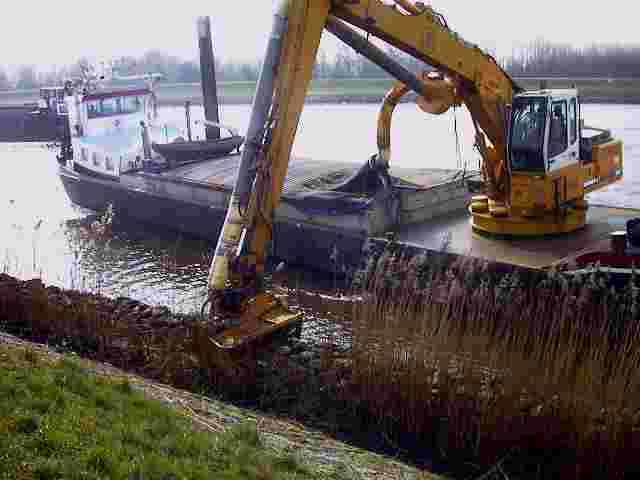Reliability of predicted water levels
( figures)
Peterjan Broomans
Site of the project:
WL | delft hydraulics
Rotterdamseweg 185
2629 HD Delft
start of the project: March 2002
In June 2002 the
Interim
Thesis has been appeared.
The Master project has been finished in February 2003
( Masters Thesis).
For working address etc. we refer to our
alumnipage.
Summary of the master project:
A large area of The Netherlands is defended by dikes to prevent it from
flooding. This protection needs maintenance and adaptations during
time. Motivation for this are: an increase of sea water levels, heavy
rain fall, changing of flow, increasing the number of environmental
friendly protections, etc.
Before adaptations are made it is important to know the consequences of
these adaptations. Previously this knowledge has been acquired by
building scale models of the area and measure the resulting flow and
water levels. Nowadays water levels and flow conditions are mostly
predicted by using Computational Fluid Dynamics packages. These
predictions are cheaper to obtain. Furthermore, it is easy to change
the area, boundary conditions, etc.
Obviously the quality of the predictions depends on which effects are
included in the model. However, the choices for the numerical
techniques also influence the predicted water levels.
The aim of this project is investigate these effects and to estimate
the differences in the estimated water levels due to numerical choices.
The consequences from wrong predictions can be very large. If the
predicted water level is too low a flooding can be the result (see
Figure 1), whereas if the predicted water level is too high costly
adaptations of the dikes are made (see Figure 2), which are unnecessary.


Figure 1:
A possible consequence if the predicted water level is too low


Figure 2:
Adaptation of a dike

Contact information:
Kees
Vuik

Back to the
home page
or the
Master students page of Kees Vuik
![]()

![]()

![]()
![]()